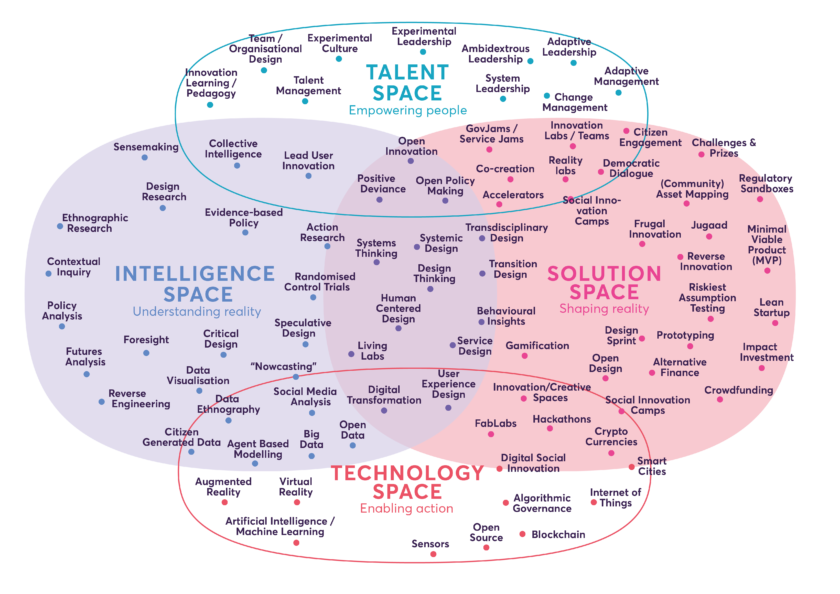There are plenty of ways to explore and develop unobvious solutions to the problems that governments are facing. It takes new methods, but crucially, it takes a different way of thinking to better respond to the task at hand. That's why we need to move from a conversation about methods, to one about mindsets.
There are countless methods
Most of the methods on our Landscape of innovation approaches are driven by thinking and action styles that deviate from common practice. They take us out of our comfort zone, ushering us to take a leap of faith to generate new knowledge. Methods like human centred design, systems thinking, futures and foresight, data driven innovation, to name a few, each explore a specific aspect of the unobvious:
- Human centred design takes a user perspective to explore and design new solutions
- Systems thinking looks at the holistic whole to explore options hidden in the interconnected web of large systems
- Futures and foresight help us to reimagine and anticipate what could become reality someday
- Big data, data analytics and visualisation help us discover patterns and trends in human behaviour and understand the world and everyday life in new ways
An uptake in new methods
Over the past decade, we have seen governments, international institutions and NGOs embrace and adopt quite a few of the methods mapped in the diagram above. Some of these methods are well codified and have become mainstream in public innovation, while others are still considered as "dark arts" only used by a small group of early adopters.
Beware the trap of the silver bullet
Unfortunately, we have also seen that when these organisations attempt to adopt new innovation methods, they often do it with an instrumental logic that tends to elevate one specific method as “the answer” to their innovation needs. This limits the possibility space along the lines of the saying “if all you have is a hammer, then every problem looks like a nail”. The challenge is to navigate these methods appropriately according to the problem you are facing, embedding particular ones in a strategic way.
Each method has benefits and drawbacks
Every innovation method has its strengths and its weaknesses. And the latter are not always considered when devising an innovation strategy. Design thinking, for example, focuses largely on understanding people and systems, and identifying problems and solutions. But it is less strong on using data analytics to explore trends, setting up trials to validate solutions, or exploring multiple possible future scenarios. To compensate for such deficiencies, we often see that various methods are used in conjunction, or that innovation practitioners create hybrids of different innovation methods (see for example Alberta’s CoLab’s Systemic Design).
Choose your methods wisely
The fixation on specific methods has also diverted the attention away from the important premise that applying innovation methods effectively relies on adopting an experimental approach and mindset. For example, entrepreneurship is not just about developing start-ups that “find a repeatable and scalable business model”, but also about enabling search-ups that “find an important and urgent need or problem worth addressing” (Zevae Zaheer in “SearchUps before StartUps”).
Similarly, applying innovation methods without experimentation risks that this effort becomes part of the traditional logic of government – expecting an input-output mode of delivery and preventing a systematic focus on opening up the space of the unobvious.
We need to go beyond looking at methods in isolation, and instead focus on building a mindset that allows us to explore the unobvious solution space in a more holistic, explicit, experimental and systematic way; we call that the six principles of an experimental mindset.


